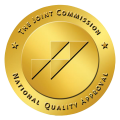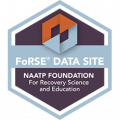Have you ever wondered how certain personality traits shape someone’s behavior in unique ways? Cluster A, B, and C personality disorders represent distinct patterns of thinking and behavior that influence how individuals interact with others. These conditions are deeply ingrained, typically emerging in adolescence or early adulthood. Understanding them is crucial for recognizing their impact and providing the right support. Let’s explore the unique characteristics of each cluster and how mental health treatment can help individuals lead more balanced lives.
What Are Personality Disorders?
Personality disorders are a group of mental health conditions characterized by persistent patterns of thoughts, behaviors, and emotions that significantly differ from what is considered typical or acceptable within a given culture or society. These patterns tend to be rigid, inflexible, and enduring, often leading to difficulties in relationships, work, and overall functioning.
There are several types of personality disorders, typically divided into three clusters – A, B and C.
Understanding the Cluster System: A, B, and C
The Diagnostic and Statistical Manual of Mental Disorders (DSM-5), a widely used classification system for mental health conditions, organizes personality disorders into three clusters: A, B, and C. These clusters group disorders based on similar symptom presentations, providing a helpful framework for understanding their diverse nature.
Cluster A personality disorders are characterized by odd or eccentric behaviors and thinking patterns. Individuals with these disorders may exhibit social detachment, paranoia, or distorted perceptions. This cluster includes:
- Paranoid Personality Disorder: A pervasive distrust and suspiciousness of others such that their motives are interpreted as malevolent.
- Schizoid Personality Disorder: A pattern of detachment from social relationships and a restricted range of emotional expression in interpersonal settings.
- Schizotypal Personality Disorder: A pattern of social and interpersonal deficits marked by acute discomfort with and reduced capacity for close relationships as well as cognitive or perceptual distortions and eccentricities of behavior.
Cluster B personality disorders are characterized by dramatic, emotional, or erratic behaviors. Individuals with these disorders may struggle with intense emotions, unstable relationships, and impulsive actions. This cluster includes:
- Antisocial Personality Disorder: A pattern of disregard for and violation of the rights of others occurring since age 15 years, as indicated by at least three of the following: failure to conform to social norms concerning lawful behaviors, deceitfulness, impulsivity or failure to plan, irritability and aggressiveness, reckless disregard for safety of self or others, consistent irresponsibility, and lack of remorse.
- Borderline Personality Disorder: A pattern of instability of interpersonal relationships, self-image, and affects, and marked impulsivity beginning by early adulthood and present in a variety of contexts.
- Histrionic Personality Disorder: A pattern of excessive emotionality and attention seeking, beginning by early adulthood and present in a variety of contexts.
- Narcissistic Personality Disorder: A pattern of grandiosity, need for admiration, and lack of empathy beginning by early adulthood and present in a variety of contexts.
Cluster C personality disorders are characterized by anxious or fearful behaviors. Individuals with these disorders may experience excessive worry, fear of rejection, or a need for control. This cluster includes:
- Avoidant Personality Disorder: A pattern of social inhibition, feelings of inadequacy, and hypersensitivity to negative evaluation beginning by early adulthood and present in a variety of contexts.
- Dependent Personality Disorder: A pervasive and excessive need to be taken care of that leads to submissive and clinging behavior and fears of separation.
- Obsessive-Compulsive Personality Disorder (OCPD): A preoccupation with orderliness, perfectionism, and control at the expense of flexibility, openness, and efficiency.
What are the Causes and Risk Factors of Personality Disorders?
The exact causes of personality disorders are complex and not fully understood. Each individual’s experience with these disorders can be influenced by a combination of factors, including.
Genetic factors play a key role in the development of personality disorders, with family history increasing the risk. Abnormalities in brain chemistry and structure, particularly in areas that regulate emotions and behavior, may also contribute to these disorders, affecting emotional responses and impulse control.
Childhood trauma, such as abuse or neglect, and growing up in unstable or dysfunctional family environments can disrupt emotional development and increase the risk of developing personality disorders. Inconsistent or harsh parenting styles can also have a lasting impact, making it harder for children to develop healthy coping mechanisms.
Maladaptive thinking and poor emotional regulation are common in individuals with personality disorders. These issues can lead to difficulties in managing emotions and relationships, as well as impulsive behaviors. Emotional dysregulation is often both a symptom and a contributing factor to these disorders.
Peer influence during adolescence, as well as societal and cultural expectations, can affect the development of personality disorders. Negative peer interactions and cultural pressures may exacerbate symptoms, particularly in conditions like borderline personality disorder.
Chronic stress or major life events, such as loss or failure, can increase the likelihood of developing a personality disorder. Co-occurring mental health conditions, like depression or substance abuse, can also complicate the development and treatment of personality disorders.
Treatment Options for Personality Disorders
Treatment for personality disorders typically involves psychotherapy and medication tailored to manage symptoms and improve quality of life.
Psychotherapy (Talk Therapy)
- Cognitive Behavioral Therapy (CBT): Targets distorted thought patterns, addressing emotional distress and relationship difficulties, commonly used for BPD, narcissistic, and antisocial personality disorders.
- Dialectical Behavior Therapy (DBT): A form of CBT, particularly effective for BPD, focusing on emotional regulation, mindfulness, and interpersonal skills.
- Schema Therapy: Combines CBT, attachment theory, and psychodynamic therapy to address maladaptive childhood schemas, effective for BPD, narcissistic, and dependent personality disorders.
- Psychodynamic Therapy: Focuses on unconscious thoughts and early experiences, useful for avoidant, dependent, and BPD.
- Mentalization-Based Therapy (MBT): Helps individuals understand their emotions and others’ intentions, beneficial for BPD.
- Transference-Focused Psychotherapy (TFP): A psychodynamic approach focusing on relationship patterns, particularly for BPD.
Medication
- Antidepressants (SSRIs): Help manage depression, anxiety, and mood swings, often used for BPD and avoidant personality disorder.
- Mood Stabilizers: Used for mood swings and impulsivity, especially in BPD or impulsive disorders.
- Antipsychotics: Address paranoia, anger, or mood swings, common in schizotypal and BPD.
- Anti-Anxiety Medications: Short-term use for anxiety, such as benzodiazepines for social anxiety in avoidant personality disorder.
In cases of severe distress, self-harm, or risk to others, short-term hospitalization or intensive outpatient programs (IOPs) may be needed for more support than traditional therapy can provide.
Diagnosis of Personality Disorders

Diagnosing personality disorders involves a comprehensive assessment by a trained mental health professional, typically using the following methods:
A clinician will conduct in-depth interviews with the individual, asking about their thoughts, behaviors, emotional patterns, and relationships. This helps to assess the individual’s history and current symptoms.
The most commonly used diagnostic tool is the Diagnostic and Statistical Manual of Mental Disorders (DSM-5), which outlines the specific criteria for diagnosing personality disorders. Each personality disorder has distinct criteria based on patterns of behavior, cognition, and emotional regulation.
Clinicians also consider how individuals interact with others, manage emotions, and behave in different situations. Standardized questionnaires, like the Millon Clinical Multiaxial Inventory (MCMI) or Minnesota Multiphasic Personality Inventory (MMPI), assess personality traits and psychological functioning, helping identify patterns consistent with personality disorders.
Before a diagnosis is made, other mental health conditions must be ruled out. Some symptoms of personality disorders overlap with other mental health issues, such as anxiety, depression, or trauma-related disorders. A comprehensive assessment ensures that the diagnosis is accurate.
Living with a Personality Disorder: Coping Strategies and Support
Living with a personality disorder can feel tough, but there are many ways to manage the challenges. One helpful approach is developing emotional awareness. Taking time for mindfulness and self-reflection can help you recognize emotional triggers, giving you more control over intense feelings and reactions. Building healthier relationships also makes a big difference—things like setting boundaries, learning better communication, and resolving conflicts in a positive way can reduce the stress that often comes with interpersonal struggles.
Having a routine can also bring much-needed stability and a sense of control, helping to manage stress and avoid feeling overwhelmed. A consistent daily schedule can be really helpful, especially when dealing with emotional ups and downs. It’s also important to take care of yourself—exercise, meditation, and making time for things that bring you joy can help improve your overall well-being.
Support from family, friends, and peers is key to managing personality disorders. Educating loved ones about your experiences helps them better understand what you’re going through, and support groups offer a safe space where you can connect with others who get it. With emotional awareness, strong relationships, and support from those around you, it’s possible to face the challenges of living with a personality disorder and lead a more fulfilling life.
Get the Support You Need for Personality Disorders at First Recovery Center
If you or a loved one are struggling with a personality disorder, don’t wait to seek help. At First Recovery Center, we offer personalized, evidence-based treatment to help individuals manage the challenges associated with Cluster A, B, and C personality disorders. Our experienced therapists and counselors are dedicated to providing compassionate care tailored to your unique needs. Whether through psychotherapy, medication, or ongoing support, we are here to help you regain control and improve your life. Take the first step toward healing today—contact us and start your journey toward lasting recovery.
















